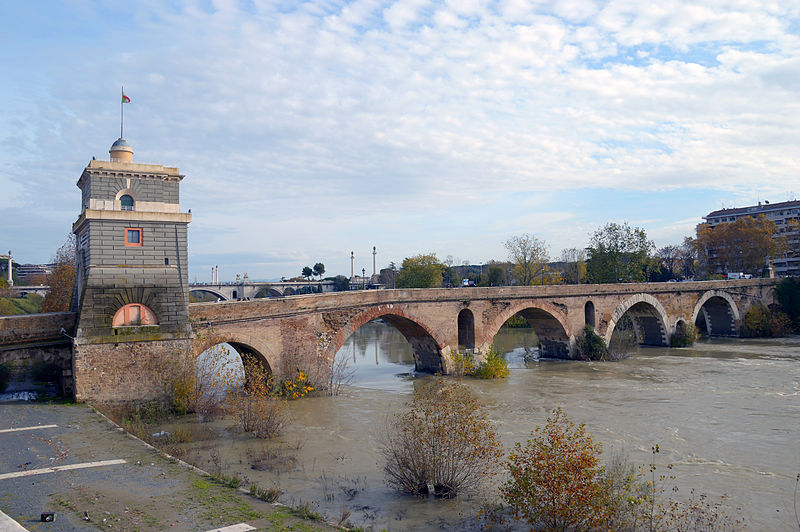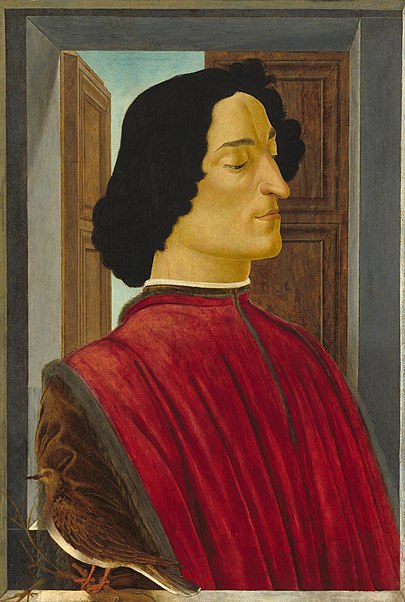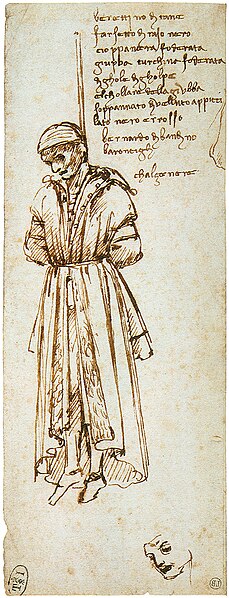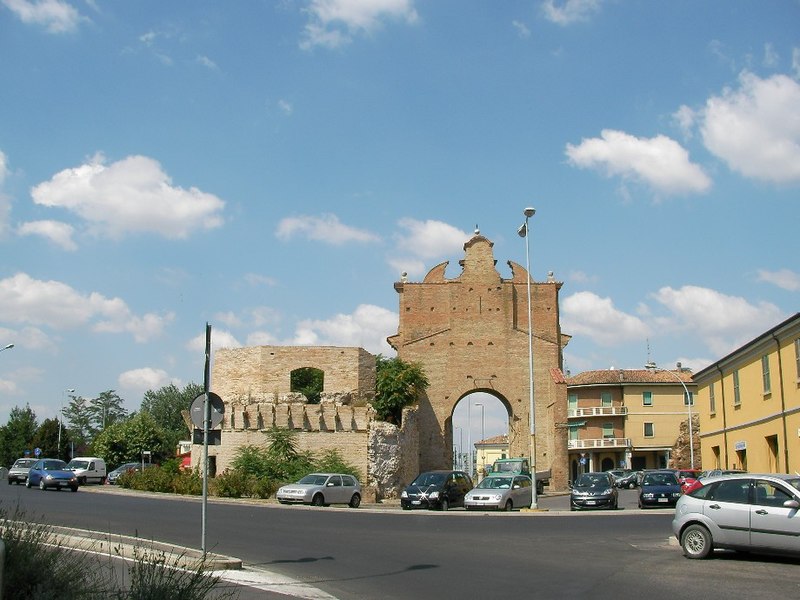 |
| Palazzo Colonna |
War with the Colonna
Girolamo was
concerned by his uncle’s ill-health. Instead of building up a strong powerbase
by creating alliances, Girolamo was too busy with his feud with the Colonna, one of Rome’s foremost families, intensified when he
accused them of treason during the battle of Camp Morto. He was no doubt
encouraged in this by his friend Virginio Orsini whose family were deadly foes of the Colonna.
Virgilio and
Girolamo occupied Colonna lands around Rome and on May 30th 1484 Girolamo
and two hundred men attacked the Colonna palazzo in Rome, the two hour fighting leaving several dead. Lorenzo
Colonna, wounded during the fight, surrendered to Virgilio. Girolamo tried to
attack the disarmed prisoner as he was taken to the Castel Sant’ Angelo. Colonna property throughout Rome
was ransacked and the Colonna treasures seized for the papacy and the greater
good of Girolamo Riario.
 |
| Marino |
Girolamo had
his eye on the Colonna fortresses of Paliano and Marino. Members of the Colonna family begged Girolamo to release Lorenzo
Colonna, in return they would hand over Marino and Ardea. This was insufficient for Girolamo whose greed overcame him raging
that;
‘I will take all of their
fortresses by storm.’[i]
He had the
messenger put to death. During a family council, Cardinal Guiliano della
Rovere, pleaded on behalf of his neighbours. His uncle Pope Sixtus was by now
too ill to keep Girolamo in check. Girolamo turned on his cousin, threatening
to burn his house down in retaliation for his support for the Colonna.
On June 29th
1484, on the feast day of Saint Peter and Saint Paul, Girolamo had Lorenzo
Colonna dragged out into the courtyard of the Castel Sant’Angelo. The prisoner
repudiated his confession made under torture before he was executed. Girolamo
then sent men to pull up the family vineyard behind their palazzo. At the same
time Cardinal Guiliano’s balcony was smashed, in retaliation for his daring to
support Girolamo’s enemies. Throughout the excitement Caterina had remained by Sixtus’
bedside, where the pope lay in extremis.
Death of a Pontiff
 |
| Ponte Molle blocked by papal army |
Pope Sixtus
IV died on 12th August 1484[ii] and with
him died Girolamo’s powerbase. Sixtus’ death set off two weeks of rioting in
Rome inspired by his enemies the Colonna. News of Sixtus’ death arrived in Paliano,
where he and his sidekick Virginio were laying siege to the town with the papal
armies while soldiers were stationed on the outskirts of Rome[iii].
Girolamo had
been joined at the siege by Caterina, seven months pregnant, who brought their
three children with her in an attempt to avoid the fevers and plagues that were
a feature of summer in Rome. Always the coward, Girolamo preferred to let
others take the risks but he had to move fast to consolidate his position now
that his main benefactor was dead.
.jpg/800px-Castel_Sant'Angelo_(_Mausoleo_di_Andriano).jpg) |
| Castel Sant'Angelo |
Girolamo’s
understanding was never more than average and he now needed Caterina’s
capabilities to deal with the crisis. He, Caterina, Virginio and Paulo Orsini
rode for Rome. They arrived on 24th August; as ordered Girolamo
stopped outside the city while Caterina and Paulo rode for the Castel Sant’Angelo,
while Virginio joined the anti-Colonna faction[iv].
Once at the fortress Caterina informed
the Castellan that she had come to hold the fortress for her husband the Papal
Captain-General; she was allowed to enter. Caterina ordered that access from
the Vatican be barred; the diarist Bartolomeo
Cerratini recorded that;
‘She [Caterina] wore….a
man’s belt whence hung a bag of gold ducats and a curved sword…among soldiers,
both horse and foot, she was much feared, for that armed lady was fierce and
cruel.’[v]
The
cardinals rushed to ask Raffaele Riario to persuade his aunt by marriage to
depart without any more fuss, even as Caterina was ejecting from the fortress
those she felt were inimical to her husband’s interests. Riario’s messenger was
sent back to his master with a flea in his ear. Outside in the city the Colonna
faction were creating mayhem and it was not until one of the cardinals
intervened that the Colonna and the Orsini agreed to lay down arms.
Coming to Terms
 |
| Cardinal Ascanio Sforza |
Caterina was
aware that she and Girolamo were friendless and short of funds and she applied
to her uncle Ludovico for support which was duly granted. Lorenzo Lanti, a
Sienese orator noted;
‘I know from a good source
that the State of Milan is protecting the States of the Count [Girolamo] and
has furnished him with soldiers for his safety.’[vi]
Girolamo for
his part was laying out his demands to the cardinals whereby his wife would
return control of the Castel Sant’Angelo to the church.
Girolamo
agreed the sum of 8,000 ducats[vii],
needed to pay his debts, and the continuation of all stipends paid under
Sixtus, that he remain Captain-General of the papal armies and his
reconfirmation as Lord of Forli and Imola. The cardinals agreed in return for
Girolamo’s immediate departure from Rome and his wife’s surrender of the Castel
Sant’Angelo.
 |
| Innocent VIII |
Caterina
failed to leave the fortress on 24th but smuggled in 150 men loyal
to her husband. The cardinals fumed and threatened to withdraw from their
agreement with Girolamo. They sent in eight of their number, including
Caterina’s uncle Ascanio, who negotiated Caterina’s departure
on 26th; her twelve days ruling the papal stronghold were over.
Sixtus’
successor was Innocent VIII, a nonentity chosen to avoid another
della Rovere papacy or a second Borgia papacy[viii].
Like Sixtus before him, Innocent turned nepotism into an art form; he married
his son Franceschetto off to Maddalena, Lorenzo de’ Medici’s daughter, in
return for a cardinalate for Lorenzo’s thirteen year old son Giovanni[ix].
Innocent was
faced with a mountain of debts left by Sixtus’ spendthrift behaviour, he was
similarly incapable of restraining his own spending. Girolamo and Caterina
hoped that the presence of Cardinal Julius della Rovere, as the power behind
the throne, would ensure that the Riarios remained in favour.
Murder and Mayhem
Giovanni
Livio Riario[x] was born in Forli on 30th
October 1484. Just over a year later Caterina gave birth on 4th
December 1485 to Galeazzo Maria[xi] who was born at Forli. Her last
child with Girolamo was Francesco[xii] born at Imola on 17th
August 1487. Less than a year later and four years after the death of his uncle, Girolamo was
murdered in April 1488
_-_BEIC_6339014.jpg/799px-Paolo_Monti_-_Servizio_fotografico_(Castrocaro_Terme_e_Terra_del_Sole%2C_1971)_-_BEIC_6339014.jpg) |
| Rocca di Rivaldino |
Following
his uncle’s death Girolamo and Caterina had returned to Forli. During his rule
in the Romagna, Girolamo had managed to make himself the most hated noble in
the Apennines. When he first arrived in Forli Girolamo had cancelled all taxes,
an easy gesture given the amount of money flowing into his purse from the
Vatican. Following his uncle’s death, Girolamo had to retrench and reinstitute
the taxes, which made him wildly unpopular with his people.
On 14th
April 1488 Girolamo remained in the main hall after dinner, leaving his wife and
her mother and two half-sisters, Stella and Bianca, to retire to Caterina’s
apartments. One of the chief citizens of Forli, Francesco Orsi, and his brother
Ludovico, called on Girolamo. Although Francesco was nominally a friend of
Girolamo’s the two had fallen out over the vexed question of taxes.
Orsi bowed
to Girolamo and then plunged a dagger into his lord’s chest. Girolamo was not
killed outright by the blow and was finished off by a couple of soldiers of
Girolamo’s bodyguard, who had not been paid for months.
‘The two soldiers, with grim
professionalism, stabbed him in ‘his vital parts’, then battered and stabbed
his lifeless face.’[xiii]
Caterina was
immediately informed that she and the children were in danger. She and her
women called out of the window, crying in vain for help. Caterina was arrested
and taken to the Palazzo Orsi while the fortress was ransacked.
Bibliography
Italian
Dynasties – Edward Burman, Equation 1989
The Deadly
Sisterhood – Leonie Frieda, Harper Collins 2013
The Rise and
Fall of the Medici – Christopher Hibbert, Folio Society 2001
Tigress of
Forli – Elizabeth Lev, Head of Zeus Ltd, 2012
The Families
Who Made Rome – Anthony Majanlahti, Pimlico 2006
Absolute
Monarchs – John Julius Norwich, Random House 2011
Niccolo’s
Smile – Maurizio Viroli, IB Tauris & Co Ltd 2001
www.wikipedia.en
[i]
Tigress of Forli - Lev
[ii]
The Riario palazzo was sacked on 13th August; fortunately Caterina
had removed most of the valuables and hidden them away from Rome before she
joined Girolamo at Paliano
[iii]
Ostensibly to prevent trouble in Rome by blocking one of the main exits, the Ponte Molle, the
cardinals may have been hoping to fend off a joint della Rovere/Riario attempt
to install a pope of their own liking using Girolamo as a tour de force
[iv]
The Orsini and the Colonna were deadly enemies
[v]
The Deadly Sisterhood - Frieda
[vi]
Ibid
[vii]
In 2016 the relative: historic standard of
living
value of that income or wealth is £5,144,000.00, labour earnings of that income or wealth is
£50,280,000.00, economic status value of that income or wealth is £138,400,000.00, economic power value of that income or
wealth is £3,448,000,000.00 www.measuringworth.com
[ix]
Later Pope Leo X
[x]
Died in 1496 age eight
[xi]
Married in 1504 to Maria Giovanna
della Rovere (b. Senigallia, 1486 – d. Bologna 1538), Dowager Lady of Camerino, and eldest sister of Francesco Maria I della Rovere, Duke of Urbino
[xiii]
The Deadly Sisterhood - Frieda





